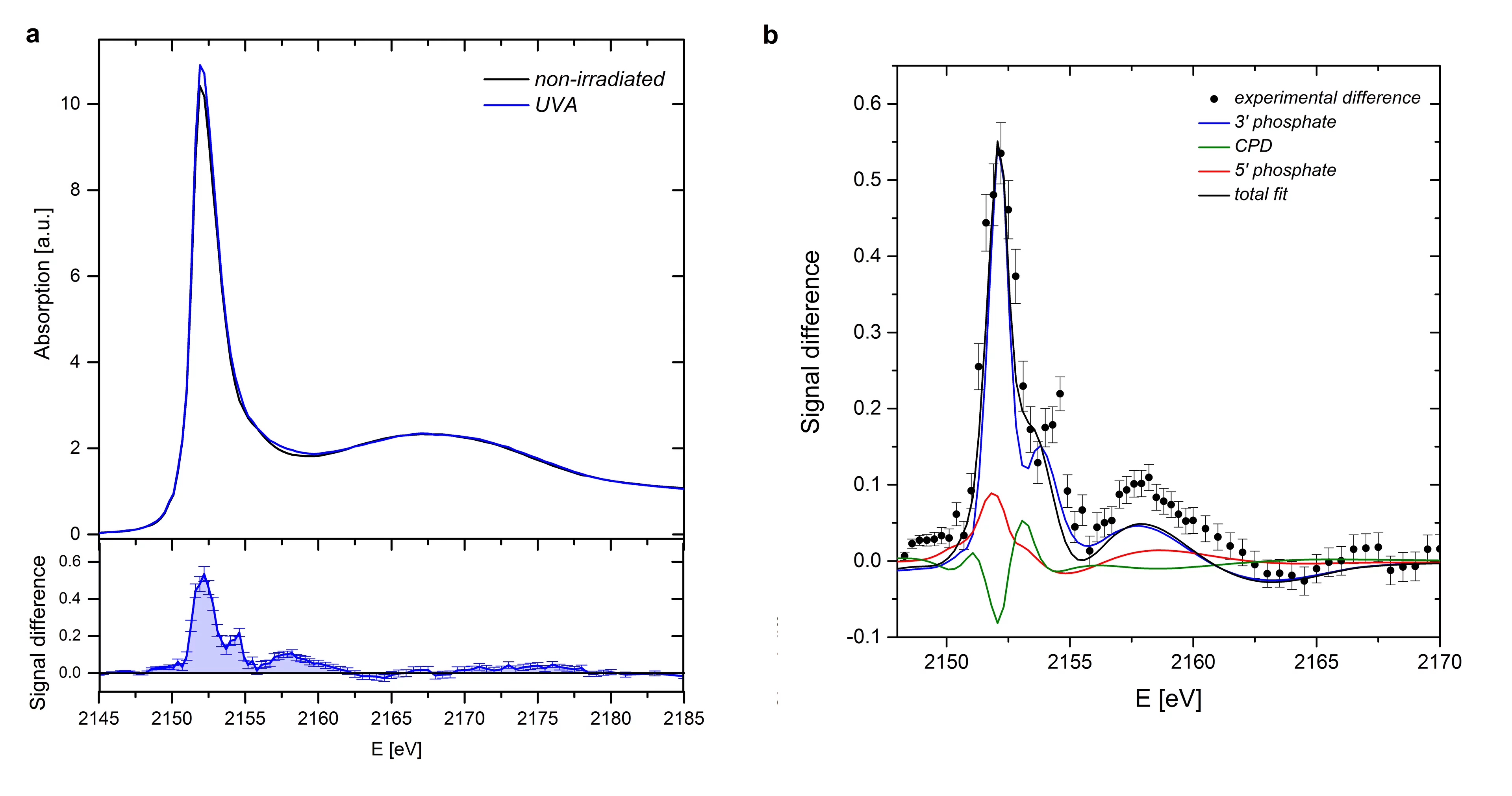The key to achieving more effective radioprotection and radiotherapy is to understand the exact mechanism of the interaction between radiation and biomolecules, and in particular to obtain the precise structure of the different forms of damage and their relative ratios. Among all biomolecules exposed to radiation, DNA plays an important role because any damage to its molecular structure can affect the whole cell and may lead to chromosomal rearrangements resulting in genomic instability or cell death. The biochemical and spectroscopic methods that are commonly used to study interaction between DNA and different radiation types can identify the possible damage types and their amount but they are not directly sensitive to the lesion structure. In the presented studies the application of X-ray spectroscopy to investigate the molecular structure of the damage caused by UV and proton radiation in DNA was demonstrated. Phosphorus K-edge X-ray absorption spectroscopy was used to study the changes in chemical structure around the phosphorus atoms in the phosphodiester DNA backbone caused by exposure to radiation. The experiment was performed using synchrotron radiation at the Swiss Light Source’s PHOENIX beamline. By combining the experimental results with theoretical calculations, information about the damage types and changes in electronic structure around the phosphorus atoms associated with each type of lesion was obtained, which can help to establish the possible formation mechanisms involved. Moreover, this method provided approximate quantitative information as to which bond in the sugar-phosphate backbone will most likely be broken after irradiation. The results of this work are preparation for future time-resolved experiments on DNA lesion formation at the SwissFEL X-ray free electron laser.
Original Publication
Investigating DNA Radiation Damage Using X-Ray Absorption SpectroscopyCzapla-Masztafiak et al.
Biophysical Journal 110 (2016) 1304
DOI: 1311. doi:10.1016/j.bpj.2016.01.031
Facility: SwissFEL
References: Joanna Czapla-Masztafiak; Joanna.Czapla-Masztafiak@psi.ch; Paul Scherrer Institut, CH-5232 Villigen PSI, Switzerland
